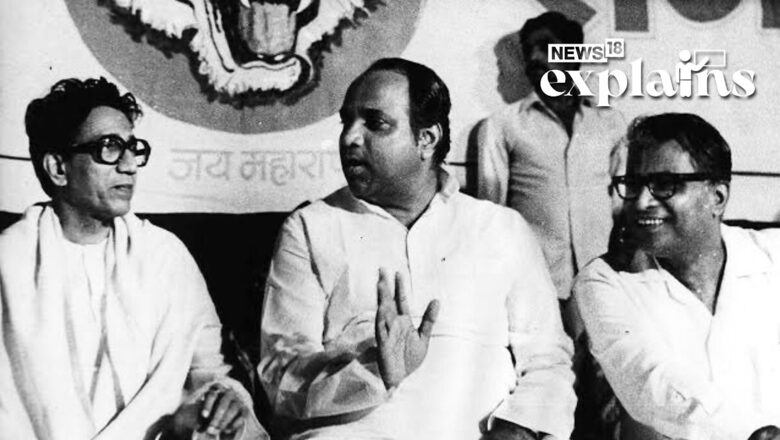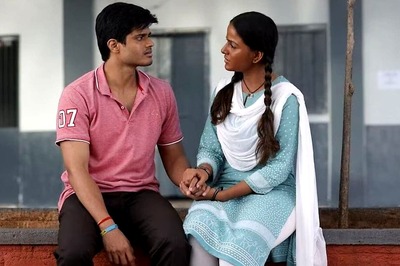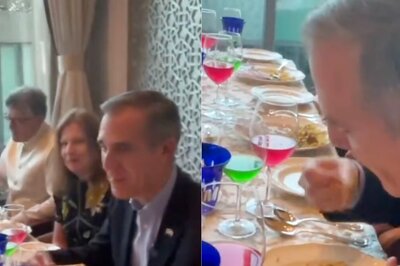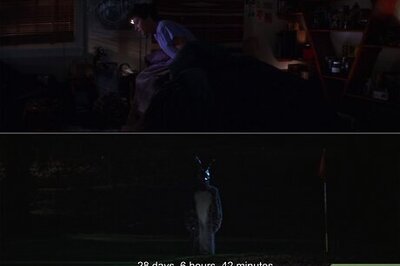
views
Nationalist Congress Party (NCP) supremo Sharad Pawar on Tuesday announced he has decided to step down as chief of the party he founded and helmed since 1999, in a dramatic move that could have a bearing on national and Maharashtra politics ahead of the 2024 Lok Sabha elections.
The announcement by Pawar at an event in Mumbai to release the updated version of his Marathi autobiography stunned leaders and workers of his party, and many were seen crying and pleading with the 82-year-old wily Maratha strongman to reconsider the surprise decision.
A meeting of a committee of party leaders — which Pawar said should decide on the election for his successor — was held at his residence later, after which his nephew Ajit Pawar announced that his uncle will need two to three days to “think over” his decision.
The decision by one of the tallest Opposition leaders in the country who could bring their parties together against the BJP ahead of the Lok Sabha elections also comes amid intense speculation over Ajit Pawar’s next political move.
“I am with you, but not as NCP chief,” Pawar, the master of twists and turns known for his deft political manoeuvring, told the emotional party workers. He had formed the NCP after he was expelled by the Congress for raising the issue of Sonia Gandhi’s foreign origin.
Let’s take a look back at when Pawar had exited the Congress:
‘Master of Twists and Turns’
Sharad Pawar’s appeal for a protest march for Goan independence in Maharashtra’s Pravaranagar in 1956 marked the start of his first recorded political involvement at a young age, according to a report by Mid Day.
Pawar joined the Youth Congress in 1958 to show his support for the Congress Party. Pawar was elected President of the Pune District Youth Congress four years after joining the Youth Congress. Pawar eventually held major positions in the Maharashtra Youth Congress and gradually began to establish himself within the Congress party, the report says.
Pawar was elected to the Maharashtra state legislative assembly in 1967 after being mentored by Maharashtra senior politician Yashwantrao Chavan. He ran in the first of several elections from the Baramati constituency. After being re-elected to the assembly in 1972, he worked in a number of state government ministries over the next several years.
Pawar left the Congress Party before the 1978 Maharashtra assembly elections and helped found the Indian National Congress (Socialist), or Congress (S) Party, according to a report by Britannica. Indira Gandhi, who had stepped down as Prime Minister in 1977 and created the Congress (I) Party faction early in 1978, was opposed to the new party.
A broad coalition of non-Congress (I) parties gained a majority of seats in the polls and formed a government in the state, with Pawar as chief minister. The federal government dismissed that administration in 1980, after Gandhi reclaimed power and the prime ministership. In 1981, Pawar was elected President of Congress-S.
Pawar ran for and won a seat in the Lok Sabha (lower chamber of the national parliament) in the 1984 elections, but he resigned the following year to become the leader of the opposition in the Maharashtra state assembly. In order to resist the rise of the right-wing Shiv Sena party in Maharashtra, Pawar combined the Congress-S with the Congress (I) Party in 1986 (the “I” was eliminated in 1996). He was elected as the state’s chief minister for a second time in 1988-91, and a fourth time in 1993-95.
Pawar was re-elected to the Lok Sabha in 1991, and he served as India’s defence minister from 1991 to 1993, under Prime Minister P.V. Narasimha Rao. However, by the 1990s, Pawar’s political clout had begun to dwindle due to allegations of corruption and administrative blunders, the report says. The Congress Party lost the state assembly elections in 1995 to a coalition of the Shiv Sena and the Bharatiya Janata Party (BJP).
The leader was elected to his third Lok Sabha term in 1996. The next year, he ran unsuccessfully for Congress president, losing the party’s internal election to Sitaram Kesri. Following the BJP-led National Democratic Alliance (NDA)’s victory in the 1998 national parliamentary elections, Pawar opposed Congress leaders’ decision to promote Sonia Gandhi as party leader, arguing that anyone who could potentially become Prime Minister of India must be born in the country. Pawar, together with former Lok Sabha Speaker Purno Sangma and Tariq Anwar, left the Congress Party in May 1999 to form the NCP.
Later that year, however, after neither party won a majority of seats in state legislative elections, the NCP joined forces with the Congress to form a coalition government in Maharashtra.
With inputs from PTI
Read all the Latest Explainers here



















Comments
0 comment